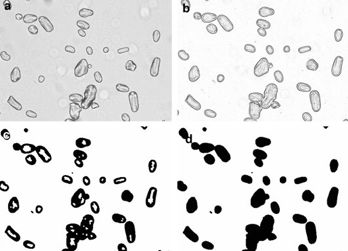Featured Research
Richard Allen/Karen Hardy/Julie Wilson
Ancient Starch grains: do they exist and are they useful
About the team's research
Starch granules offer a way to directly explore the plant component of ancient diet.
Starch
Starch Granule Research
Recent work in various parts of the world has suggested the possibility of ancient starch granules surviving and adhering to archaeological artefacts. Often this information is used to infer aspects of diet. One additional source for recovery of archaeological starch granules is dental calculus. The presence of plant food debris in dental calculus is well known but has not been not widely investigated using archaeological material. The extraction of starch granules from dental calculus represents a direct link to the consumption of starchy food by humans or animals. Using dental calculus also sidesteps many other questions still inherent in using starch granules to reconstruct aspects of ancient diet, such as the effects of diagenesis on their morphology; as the starches are trapped inside a concreted matrix they are less likely to alter over time. We used amylase digestion by a starch-specific enzyme to confirm the material as starch.
Image Analysis
Image analysis techniques have been used to investigate the likelihood of being able to classify and assign a probability regarding the plant origin of individual starch granules in a collection of granules. Quantifiable variables were used to characterize the granules, and the assignments and probabilities were calculated objectively. We consider the classification of images containing granules of a single species and of mixed species and the possibility of assigning a class to granules of unknown species in an image of a slide obtained from the dental calculus of chimpanzees. (see Figure).
Want to know more?
Visit Dr Julie Wilson personal pages and the href="SiteManager?ctfn=hierarchy&fnno=10&sid=-1&lang=en&sslinkid=4"> and BioArCh Research group web pages.
Karen Hardy et al. (2009) Starch granules, dental calculus and new perspectives on ancient diet, Journal of Archaeological Science 36, (2) 248-255 http://dx.doi.org/10.1016/j.jas.2008.09.015
Julie Wilson et al., (2010) Automated classification of starch granules using supervised pattern recognition of morphological properties, Journal of Archaeological Science, 37, (3), 594-604 http://dx.doi.org/10.1016/j.jas.2009.10.024

